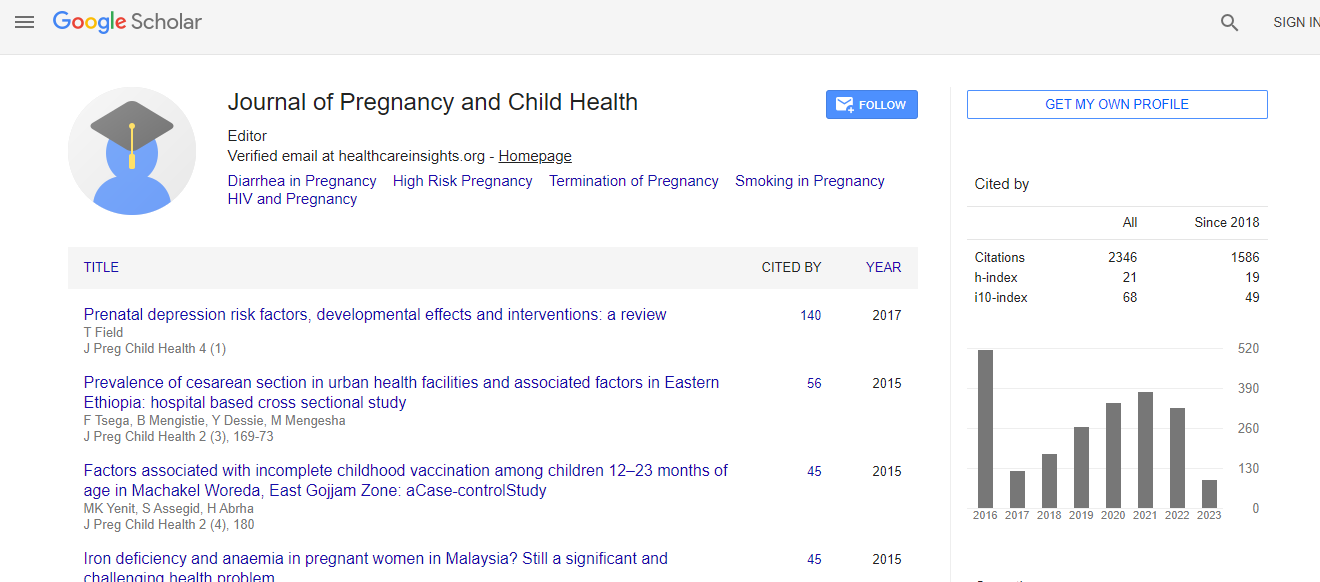Research Article
Outcome of Pregnancies among Cameroonian Anemic Women: A Comparative Cohort Study
| Elie Nkwabong* and Joseph Nelson Fomulu | |
| Department of Obstetrics & Gynecology, University Teaching Hospital/Faculty of Medicine and Biomedical Sciences, Yaounde, Cameroon | |
| Corresponding Author : | Elie Nkwabong Department of Obstetrics & Gynecology University Teaching Hospital/Faculty of Medicine and Biomedical Sciences Yaounde, Cameroon Tel: 237 99663843 Fax: 237 22312567 E-mail: enkwabong@yahoo.fr |
| Received May 31, 2014; Accepted October 29, 2014; Published October 31, 2014 | |
| Citation: Nkwabong E, Fomulu JN (2014) Outcome of Pregnancies among Cameroonian Anemic Women: A Comparative Cohort Study. J Preg Child Health 1:117. doi: 10.4172/2376-127X.1000117 | |
| Copyright: © 2014 Nkwabong E, et al.This is an open-access article distributed under the terms of the Creative Commons Attribution License, which permits unrestricted use, distribution, and reproduction in any medium, provided the original author and source are credited. | |
Abstract
Objective: To evaluate maternal and fetal outcomes among Cameroonian anemic pregnant women according to the degree of correction of anemia.
Methods: This cohort study was conducted in the Yaoundé University Teaching Hospital, Cameroon, from March 1st, 2011 to February 28th, 2013. Anemic pregnant women (initial Hemoglobin concentration (Hb) <10 g/dl) and nonanemic pregnant women (Hb ≥ 11 g/dl) were followed up till delivery. Variables measured were gestational age at the first visit (booking), Hb value at the first consultation and at 36 weeks gestation, pregnancy complications, gestational age at delivery, birth weight (BW) and Apgar score. Data were analyzed using SPSS 18.0. Chi square test or Fisher exact test and t-test were used for comparison. P<0.05 was considered statistically significant.
Results: Hb still less than 9 g/dl at 36 weeks gestation was associated with an increased risk of low BW (RR 7, 95%CI 1.6-30.4), pre-eclampsia (RR 3.3, 95%CI 0.9-11.9) and preterm deliveries (RR 3, 95% CI 0.6-14.6). Mean BW observed among initially anemic women with Hb ≥ 10 g/dl at 36 weeks gestation was higher than that found among women of the non anemic group (P<0.0001).
Conclusion: Hb still less than 9 g/dl at 36 weeks gestation was associated with increased risk of low BW while anemia corrected with iron and folic acid before term was associated with a significant increase in BW.

 Spanish
Spanish  Chinese
Chinese  Russian
Russian  German
German  French
French  Japanese
Japanese  Portuguese
Portuguese  Hindi
Hindi 
